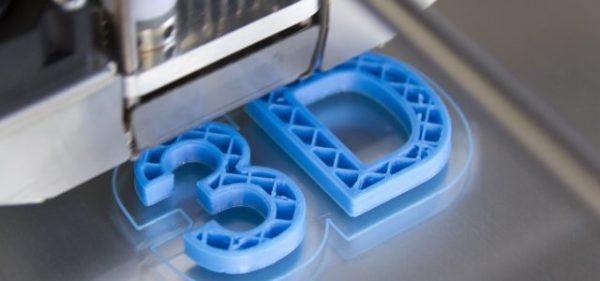3D Printing
3D printing is another emerging technology that has the potential to change how people do things: it makes the small-scale manufacturing of useful items available to everyday people by making the creation of 3D objects as easy as printing a document on a laser printer.
How does it work?
The name itself gives away the general principle: a 3D printer creates three-dimensional objects by printing them a layer at a time, using a substance that’s melted and deposited onto a surface. Each layer that’s added builds up the object, just like each new layer of brick contributes to a wall.
3D printers operate similarly to paper printers: they use motorised “heads” to deliver a substance – usually some sort of plastic filament – to locations determined by a Computer Aided Design (CAD) program.
They’re not limited to just creating objects with plastic filament, either: they can print with ceramics, metals, alloys, resins, wax, stainless steel, gold and silver, titanium, and even gypsum (sandstone).
And just like printers use document files as a guide on what to print, 3D printers print designs created in CAD programs; guided by the designer’s CAD file, the 3D printer’s head slowly builds up the desired object until it’s complete.
Why is this important?
Think about being able to print small household objects when something breaks instead of going to the shops to buy a replacement, and you’ll start to understand the potential of such a technology.
Or if you’re interested in something more disruptive, how about parts for a car? Since 3D printers can be print objects using a wide range of substances, including metal, it’s feasible that someday, garages and dealerships could use 3D printers to create replacement car parts without having to order them from the local supplier, or their overseas HQs if they’re not in stock.
That means shorter wait times for the customer, less expense for the garage, and the opportunity to custom-build hard-to-find replacement car parts, extending the lifespan of older models indefinitely.
All service companies would need is the file containing the data for each required part; they could feed those into their 3D printer loaded with the appropriate materials, and mere hours later those parts could be ready for installation.
Bump this idea up to an industrial scale, and the possibilities become truly endless.
Teleportation… almost
The technology is as close to teleportation as we’re likely to see, as it effectively allows an object to be transmitted over the internet and re-assembled thousands of kilometres away.
And for a country like South Africa, located so far from car and FMCG manufacturers, 3D printing replacement parts or creating new products in their entirety could work to our benefit.
Existing uses of 3D printers
3D printing isn’t a new technology, per se, it’s just in its infancy. Here are some of the ways it’s already being used in the world.
Manufacturing in Space
NASA, America’s space agency, sends 3D printers on space missions so astronauts have a way to create replacement parts for anything that breaks. That’s a lot easier than sending up the needed bits in a new rocket or being forced to lug around spares.
Customisation
Several companies are using 3D printers to allow customers to customise consumer objects, like phone cases and game controller faceplates, over the internet.
The customer chooses their design, it’s sent off to be printed, and is shipped as soon as it’s ready.
Rapid Prototyping
3D printers allow companies to quickly build and test products, making changes to the overall design of quickly-built prototypes far faster than traditional product development allows.
That means shorter time to market, lower development costs, and ultimately better products in consumers’ hands.
Culinary Masterpieces
It’s no stretch to think that 3D printers could feasibly use foodstuffs instead of plastic filaments to create things.
This versatility is already being realised, allowing creative chefs to layer food into novel 3D shapes to create some truly amazing and unique dishes.
An enterprising Ukraine chef, Dinara Kasko, has even used a 3D printer to create silicon molds which she uses to make oddly-shaped cakes.
Medical Uses
Perhaps the most exciting use of 3D printing tech is in the medical field. Already, it’s being used to create cost-effective prosthetics, and has proven particularly valuable for people for whom traditional prosthetics are just too expensive.
Amazingly, it’s also being used to 3D print tissues with blood vessels, bone scaffolds, heart valves, ear cartilage, and even custom-made skull implants that replace bone damaged in accidents.
And in the future, they’ll also be used in the creation of human organ replacements, ears and noses, and synthetic skin!
All of these objects and more are currently being 3D printed for use in cutting-edge human surgeries.
And it’s not just humans that will benefit from it, either: in the UK, a combination of 3D scanning technology and 3D printing are how pioneering veterinary surgeon Dr Noel Fitzpatrick creates custom-built “bionic limbs” for injured pets, as shown on the popular TV show “The Supervet”.
Building objects we couldn’t build before
Thanks to this wonderful technology, we can now create items we couldn’t before 3D printing existed, due to limitations of established manufacturing tech.
For example, creators can 3D-print things that manufacturing methods like injection molding can’t, like personalised car parts (Ford in the US is doing it), replacement parts for human organs, customised stents for specialised surgeries, complex shapes like 3D models of molecules, and more.
Strength-to-weight
And because 3D-printed objects also enjoy a very good strength-to-weight ratio, the technology is being produced to build new aircraft that are lighter than ever – Airbus says weight can be cut this way by up to 55%, which leads to improved fuel efficiency and lower air travel costs.
It’s so versatile, Australian researchers even managed to 3D-print an entire jet engine with it. And that was almost four years ago!
A name you might recognise
3D printing is turning heads everywhere, to the point that now, even big companies are starting to get involved. With a market that is projected to be worth around $30bn by 2022, this isn’t surprising.
HP is one of the biggest of these players, having acquired David Vision Systems GmbH and David 3D Solutions in 2016 – companies that specialise in both 3D scanning and 3D printing technologies.
HP has already made use of the patents it acquired along with those companies to develop new 3D printing solutions for all kinds of applications, which have helped augment its existing printing business with new consumer and enterprise-focused offerings.
HP’s Multi Jet Fusion 3D printers are already helping businesses grow. Take a look at the video below, where an HP customer in the US lays out what they’re doing with these units, and how the high speed of iteration that’s now possible has helped to transform their business:
3D printing is an exciting technology that is poised to take off in a huge way. Watch this space!
[Header Image: CC-BY-2.0]
[Content https://www.tarsus.today/3d-printing-disruption-in-action/]




